


Rental info
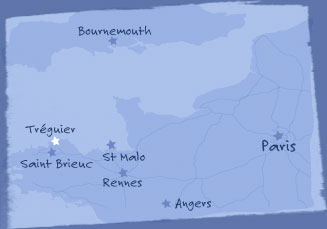
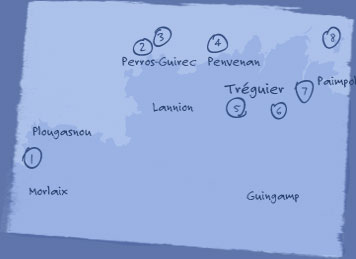



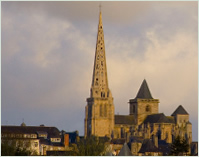

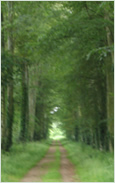

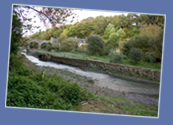
- Cairn de Barnenez
- Sentier des Douaniers
- Les Sept-Îles
- Plage des Dunes
- The aqueduct on the Guindy
- Château de la Roche-Jagu
- Le Vapeur, the old steam train
- Île de Bréhat
Brittany Something different
Tréguier is just 3 hours from Paris on the bullet train, but it is a world apart. The ancient Celtic history, the scenic ocean coast, the lush countryside of farms, the temperate weather and verdant gardens, the colorful Breton traditions all give Brittany its own special character.
Côte de Granit Rose
The northern coast of Brittany is known for the spectacular ruggedness and color of the pink granite that predominates. Tranquil sand beaches are bookmarked by heaving cliffs and natural sculptures, timeless and infinitely varied. The soft and changing light draws out the subtleties of color and shapes. The landscape is accented by vegetation adapted to the severe conditions, notably the dark green and yellow of the ajonc (gorse).
In its end-of-June 2006 issue, the French magazine Le Nouvel Observateur voted Perros-Guirec the top seaside vacation destination in France, writing that “the resort on the Côte de Granit Rose excels in all areas: invigorating swimming, leisure sporting activities and preserved natural surroundings.”
Menhir, tumulus, and dolmen
These impressive and mysterious stone constructions, dated from 4500 to 4100 BC, have as many modern-day theories about their function as they have stones. In truth, no one understands what they meant any better than they understand how they could have been built. Forty-foot tall stones tipped up on end, requiring an army of thousands and pulleys and ropes not yet invented. To see some of these early stone monuments is, even in these days when nothing surprises, to be amazed. They are scattered all over Brittany, from the famous alignments in Carnac in the south to the cairn de Barnenez near Morlaix in the north.
Agriculture and horticulture
Brittany is the leading agricultural region in France with 65% of its land devoted to the production of livestock and vegetables. Much of what it grows is sent out (Brittany supplies 3/4 of the country’s artichokes and cauliflower) but the local markets are testimony to the freshness and abundance of its produce. The same temperate, moist weather so benevolent to the farmers fuels a horticultural paradise. From palm trees to multi-colored hortensia (hydrangea), the Bretons pride themselves on carefully tended gardens and streets festooned with flowers. Every season has its blossoms and the soft, lush growth defines the houses and the people.
Tréguier, Petite Cité de Caractère
Small cities in France that still closely reflect their ancient heritage are designated cité de caractère. Tréguier was a medieval walled city and as one of five cities in Brittany with a cathedral, was a religious center and capital for the Tregor region. Maison de Granit is just four houses up from the old stone towers and another fifty yards from the port. The town has maisons à colombage (houses of wood beams and plaster) from the 15th and 16th century and hôtels particuliers en granit (residences of granite) from the 17th and 18th century. La Cathédrale St-Tugdual (14-15c) is a masterpiece of Breton religious architecture with a magnificent cloister of 48 arches. To walk through the city is to experience this long history, but it is also a city alive with the sounds of today. There is a regional high school in the old monastery and you can choose where you want to buy your bread from five different boulangeries.
Tradition
Brittany has always been a fiercely independent region with a Celtic history mingled with and similar to other coastal territories such as Ireland, Wales, Normandy, and England. It wasn’t until the late 15th century that Brittany officially became part of France and even then, and ever since, it has been an uneasy alliance. The territorial resistance has transformed into a cultural one as groups have worked hard to keep the old traditions, such as the music and the language, alive. This history has created a unique and original assortment of cultural events, different than those found anywhere else.